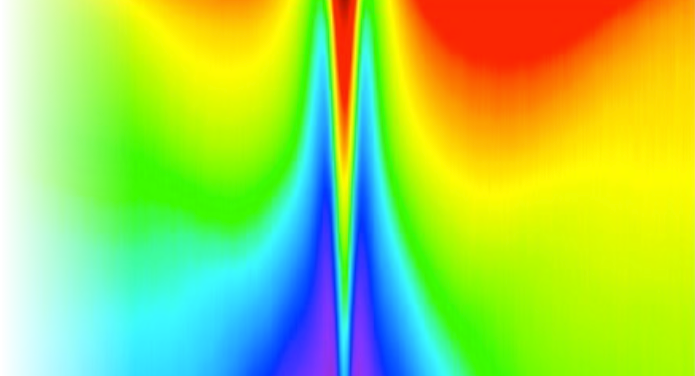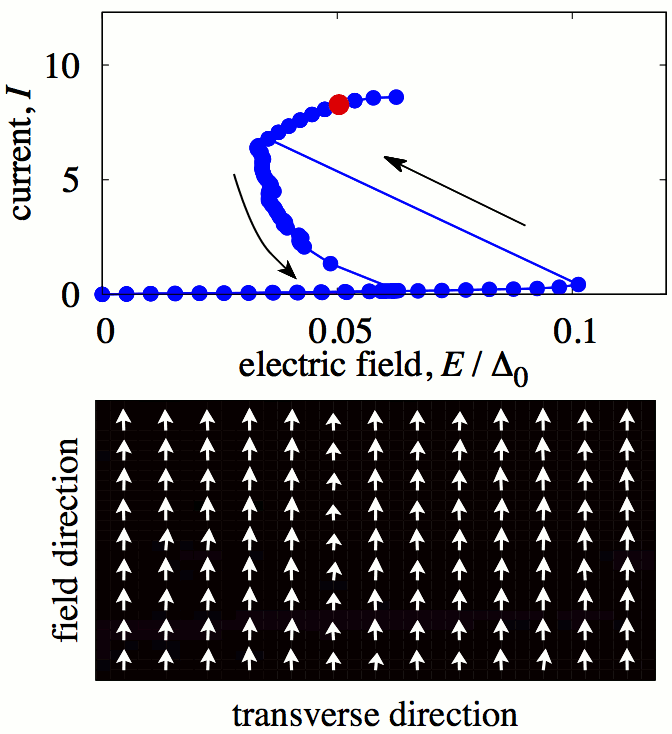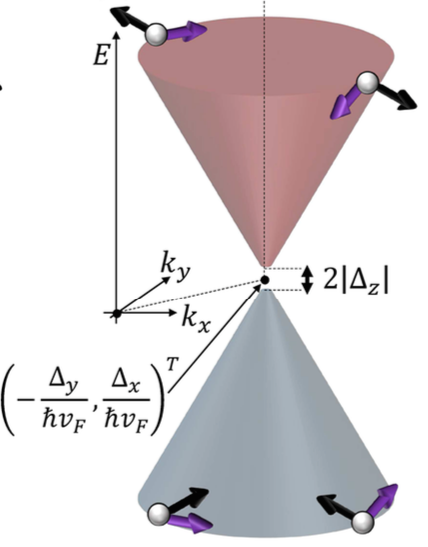
in Condensed Matter Physics Theory
Physics Department, University at Buffalo SUNY

Electrons are the main actors in electronic and chemical applications. Dr. Jong Han's main area of research is the effect of strong electron interaction in condensed matter systems. When many electrons cooperate via Coulomb interaction among themselves or through underlying lattice, new state of electronic order emerges to give exotic properties such as magnetism and superconductivity. While Dr. Han's group is interested in general phenomena of interacting-electron problems, the group currently focuses its effort on the interacting electron liquid under strong external field, such as electric field. This area of research, commonly known as nonequilibrium many-body physics, is one of the most exciting and fast growing fields in condensed matter physics, and offers great opportunities in fundamental science and application in nanotechnology.
The following are currently the main research topics in Dr. Han's group.
 Switching of resistive states between insulating and metallic states in
solids has fascinated physicists for many decades. With today's
nanotechnology, resistive switching controlled by an external voltage
drives a great deal of industry interest, and, for condensed matter
theorists, poses a great challenge to study the interplay of nonequilibrium and
electron interaction effects. The animation on the right shows a
theoretical simulation, first from a quantum mechanical microscopic
model, in which an experimentally observed negative differential
resistance phenomenon (you increase voltage across a device and the current decreases)
is explained as arising from conducting filament
dynamics. To study the phenomena, Dr. Han's group has recently developed a
steady-state
Keldysh Green's function method under DC electric field.
Switching of resistive states between insulating and metallic states in
solids has fascinated physicists for many decades. With today's
nanotechnology, resistive switching controlled by an external voltage
drives a great deal of industry interest, and, for condensed matter
theorists, poses a great challenge to study the interplay of nonequilibrium and
electron interaction effects. The animation on the right shows a
theoretical simulation, first from a quantum mechanical microscopic
model, in which an experimentally observed negative differential
resistance phenomenon (you increase voltage across a device and the current decreases)
is explained as arising from conducting filament
dynamics. To study the phenomena, Dr. Han's group has recently developed a
steady-state
Keldysh Green's function method under DC electric field.
 What happens when electrons pass through a single slit? In contrast to
photons as often considered in quantum mechanics textbooks, electrons
exhibit much more complex behaviors which have puzzled scientists for
decades, due to the strong Coulomb interaction between electrons and the
underlying lattice. The
case is put to test in a nanoscale 2-dimensional electron gas created on
a silicon chip which is then pinched by landscaping the electrostatic
potential, in collaboration with engineers in EE department at UB. The
plot on the left is measurements of electric conductance of quantum
point contact (QPC) device under different bias and gate voltages. The
strong variation and multiple-peak behavior of conductance is unforeseen
and Dr. Han's modeling based on nonequilibrium-induced anisotropic
disorder matches the unusual exponential dependence of conductance by
temperature and bias. (In preparation for publication)
What happens when electrons pass through a single slit? In contrast to
photons as often considered in quantum mechanics textbooks, electrons
exhibit much more complex behaviors which have puzzled scientists for
decades, due to the strong Coulomb interaction between electrons and the
underlying lattice. The
case is put to test in a nanoscale 2-dimensional electron gas created on
a silicon chip which is then pinched by landscaping the electrostatic
potential, in collaboration with engineers in EE department at UB. The
plot on the left is measurements of electric conductance of quantum
point contact (QPC) device under different bias and gate voltages. The
strong variation and multiple-peak behavior of conductance is unforeseen
and Dr. Han's modeling based on nonequilibrium-induced anisotropic
disorder matches the unusual exponential dependence of conductance by
temperature and bias. (In preparation for publication)
 In 1928, British physicist Paul Dirac predicted the existence of anti-particles while trying to extend the Schroedinger equation into relativistic regime. The solution to the Dirac theory required existence of particle and anti-particle states with linear dispersion relations (Dirac cone as shown right) mix to give the usual quadratic dispersion relations of the non-relativistic limit. In recnt years, condensed matter physicists have discovered an array of materials having band-states having similar mathematical properties as the Dirac particles, and the physics of these topological materials is one of the most exciting news in condensed matter reserach of today, resulting in novel effects such as topological surface states, the Klein tunneling, spin-momentum locking, and tunneling planar Hall effect.
At the apex of the Dirac cones, a small external field or interaction can create a strong effect qualitatively different from conventional materials. We are currently studying the nonequilirium distribution in current-saturated limit in graphene, a prototypical and oldest-known Dirac material.
In 1928, British physicist Paul Dirac predicted the existence of anti-particles while trying to extend the Schroedinger equation into relativistic regime. The solution to the Dirac theory required existence of particle and anti-particle states with linear dispersion relations (Dirac cone as shown right) mix to give the usual quadratic dispersion relations of the non-relativistic limit. In recnt years, condensed matter physicists have discovered an array of materials having band-states having similar mathematical properties as the Dirac particles, and the physics of these topological materials is one of the most exciting news in condensed matter reserach of today, resulting in novel effects such as topological surface states, the Klein tunneling, spin-momentum locking, and tunneling planar Hall effect.
At the apex of the Dirac cones, a small external field or interaction can create a strong effect qualitatively different from conventional materials. We are currently studying the nonequilirium distribution in current-saturated limit in graphene, a prototypical and oldest-known Dirac material.